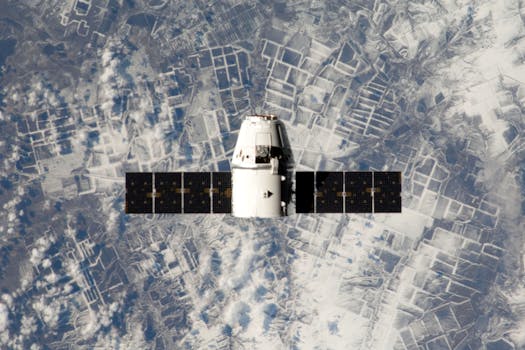The Future of Satellites: Revolutionizing Global Connectivity

The Future of Satellites: Revolutionizing Global Connectivity
As we continue to rely on technology to drive innovation and progress, the role of satellites in our daily lives is becoming increasingly important. The future of satellites is poised to revolutionize global connectivity, enabling faster and more reliable communication, navigation, and remote sensing. With advancements in space technology, satellites are becoming increasingly important for various industries and applications, including telecommunications, weather forecasting, and Earth observation.
Introduction to the Future of Satellites
The use of satellites dates back to the 1950s, when the first artificial satellite, Sputnik, was launched into space. Since then, thousands of satellites have been launched, with each one playing a crucial role in advancing our understanding of space and improving our daily lives. Today, satellites are used for a wide range of applications, including communication, navigation, weather forecasting, and Earth observation. The future of satellites is expected to be shaped by advancements in space technology, including the development of smaller, more efficient satellites, and the use of new materials and propulsion systems.
Advancements in Space Technology
One of the key drivers of the future of satellites is the advancement of space technology. New technologies, such as 3D printing and advanced materials, are enabling the development of smaller, more efficient satellites that can be launched at a lower cost. Additionally, the use of new propulsion systems, such as electric propulsion, is allowing satellites to stay in orbit for longer periods of time, reducing the need for costly launch missions. The development of reusable launch vehicles, such as those being developed by SpaceX and Blue Origin, is also expected to play a major role in shaping the future of satellites.
Another area of advancement is in the field of satellite communications. The development of high-throughput satellites (HTS) is enabling faster and more reliable communication, with speeds of up to 100 Gbps. This is particularly important for applications such as video streaming, online gaming, and cloud computing. The use of advanced modulation techniques, such as beam-hopping and frequency reuse, is also allowing for more efficient use of satellite bandwidth, enabling more users to be connected at the same time.
Applications of the Future of Satellites
The future of satellites is expected to have a major impact on various industries and applications. One of the most significant areas of impact will be in the field of telecommunications. With the development of 5G networks, satellites will play a crucial role in providing connectivity to remote and underserved areas, where traditional fiber-optic cables are not available. Satellites will also be used to provide backup connectivity in the event of a network outage, ensuring that critical communications systems remain online.
Another area of application is in the field of Earth observation. Satellites are being used to monitor the environment, track climate change, and predict natural disasters. The use of advanced sensors and imaging technologies, such as hyperspectral and synthetic aperture radar (SAR), is enabling the collection of high-resolution data, which can be used to inform decision-making and policy development.
Conclusion
In conclusion, the future of satellites is poised to revolutionize global connectivity, enabling faster and more reliable communication, navigation, and remote sensing. With advancements in space technology, satellites are becoming increasingly important for various industries and applications, including telecommunications, weather forecasting, and Earth observation. As we continue to rely on technology to drive innovation and progress, the role of satellites in our daily lives will only continue to grow in importance.




